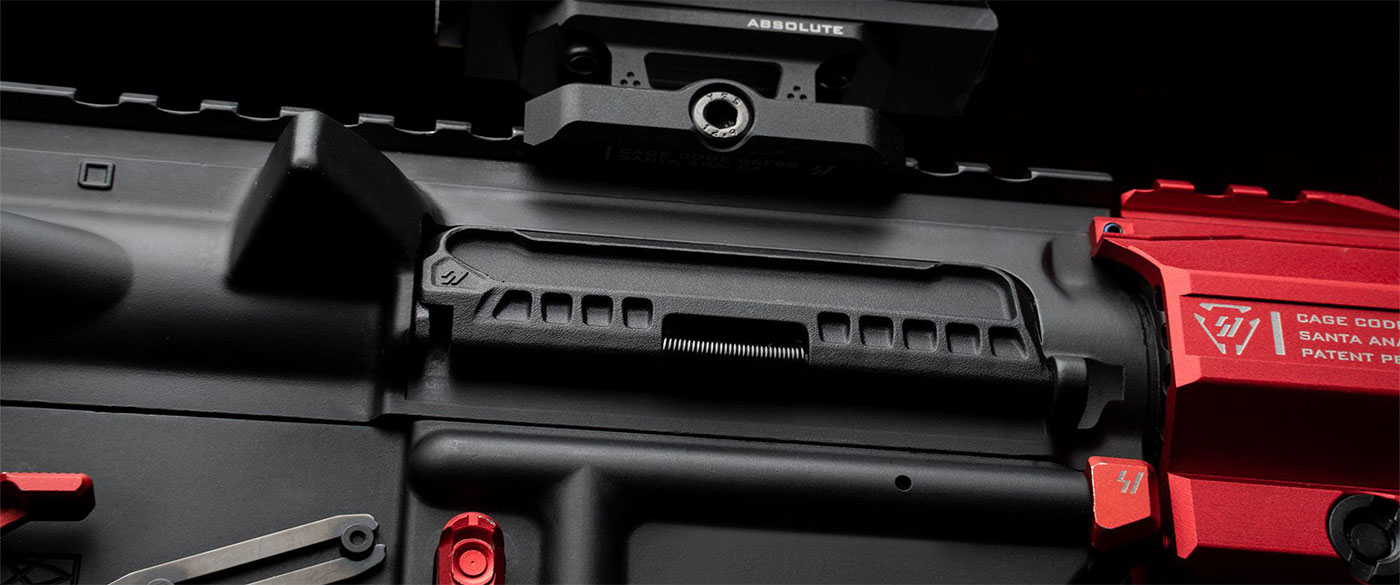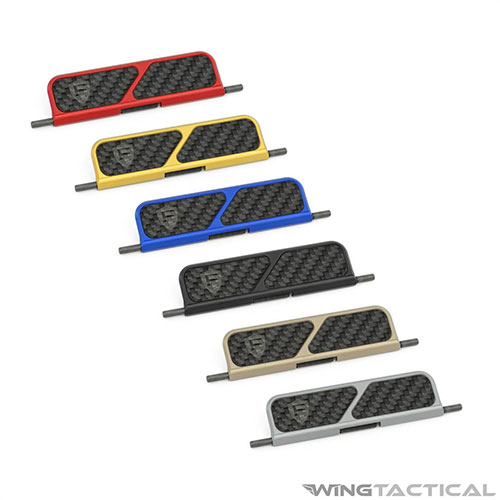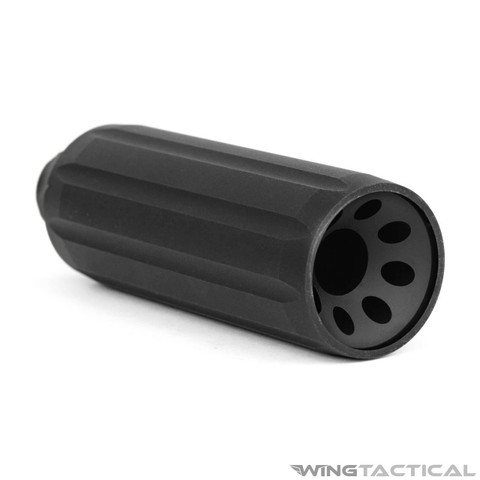If you’re looking for a dust cover for your AR-15, you’ve come to the right place. Browse our collection of high-quality, aftermarket dust covers for your upgrade project or a custom build.

AR-15 Dust Covers 101
One of the most prominent controversies regarding the AR platform is whether or not you need a dust cover. Many modern AR owners say that the dust cover is obsolete, whereas a significant part of the AR community believes it is an absolute necessity.
On the right side of an AR receiver, you will find the ejection port — an opening in the lower receiver to allow spent or malfunctioning rounds to be ejected. Most AR-15s have a dust cover over this opening to keep dust and other debris out of the firearm when it is not being used.
Dust covers were a part of the original AR design, and even first-generation AR-10s had dust covers. The military also made them a requirement on AR-15s when they adopted the weapon, and even now, the US military's new NGSW (Next Generation Squad Weapon) features a dust cover.
This position alone should be evidence enough that, for rugged field applications, an AR-15 dust cover is a must.

Dust Covers for AR-15
AR-15 dust covers offer multiple opportunities for customization. They’re available in various colors, materials, and designs. Whether you choose one that matches your rifle’s unique aesthetic profile or opt for function over form, you’ll help protect your action from dust and debris.
Wing Tactical: Today’s Top Firearm Components Source
Wing Tactical is a top source for today’s gunsmiths — we’re proud to serve law enforcement officers, military personnel, competitive shooters, and everyone in between.
Our Satisfaction Guarantee backs all of our products. While we don’t include anything in our inventory that we wouldn’t use in our builds, we strive for 100% customer satisfaction on every order. If your part doesn’t perform as expected, we promise to make it right.
If you have any questions about an order, component, or installation, chat with our dedicated customer service team anytime.
Frequently Asked Questions
Is a dust cover necessary?
The dust cover is an essential part of an AR platform; it offers a significant benefit and has no notable disadvantages.
A dust cover is necessary for a military setting where soldiers must operate in different environments. In recent Middle Eastern conflict areas, dust has been a significant problem. It gets into the receiver, and it can start to collect and cause malfunctions. Therefore, a dust cover is very beneficial, keeping the sand particles and other debris out of the receiver.
However, the dust cover is optional if you are talking about a civilian AR. It doesn't hurt to have one, and removing it won't have any significant advantage, but the drawbacks aren't that intense, either. A civilian AR used as ruggedly as a military M4 or M16 would likely still benefit from a dust cover, even though there isn't that much dust in most places in the US.
Furthermore, these days bolt carrier groups have advanced finishes, which decrease friction in the chamber and allow the rifle to operate more smoothly even if a bit of dust and debris gets into the chamber.
So, having an ejection port dust cover is preferable. However, even if a rifle doesn't have it, it doesn't mean it will start jamming on every other shot. In a civilian environment, with proper maintenance, an AR without a dust cover can be as reliable as one with a dust cover. For military use, a dust cover is essential.
Can you fire an AR with the dust cover closed?
Yes, even if the dust cover is closed, you can fire your AR-15. The dust cover will pop open automatically as the bolt carrier group starts to move back. So, you don't have to consciously open the dust cover every time before you go to shoot your rifle.
Do I need to clean my AR after every use?
While you don’t need to completely disassemble the firearm and clean every component after every range day, you should take steps to remove debris from the surfaces and the action regularly — perhaps after every use.
If you're regularly shooting, you should perform a deep clean at least once every six months. If you’re using your rifle for rugged applications (as a year-round pest hunter, for instance), you might want to deep-clean more often.
However, most range shooters can get away with twice-a-year deep cleans, occasional bore snaking, and surface cleaning after practice sessions.
Is it okay to dry-fire an AR?
Yes — safely dry firing is an excellent way to get more comfortable with your rifle’s functions outside a range setting. But, before you dry fire, ensure your firearm is pointed in a safe direction, remove any magazines, and open the dust cover to check for live rounds in the chamber.
Can I shoot my stock AR right out of the box?
Many firearms must be cleaned or re-oiled out of the box before they’re ready to fire for the first time. The same applies to stock AR rifles — follow the manufacturer’s instructions closely before heading to the range.






